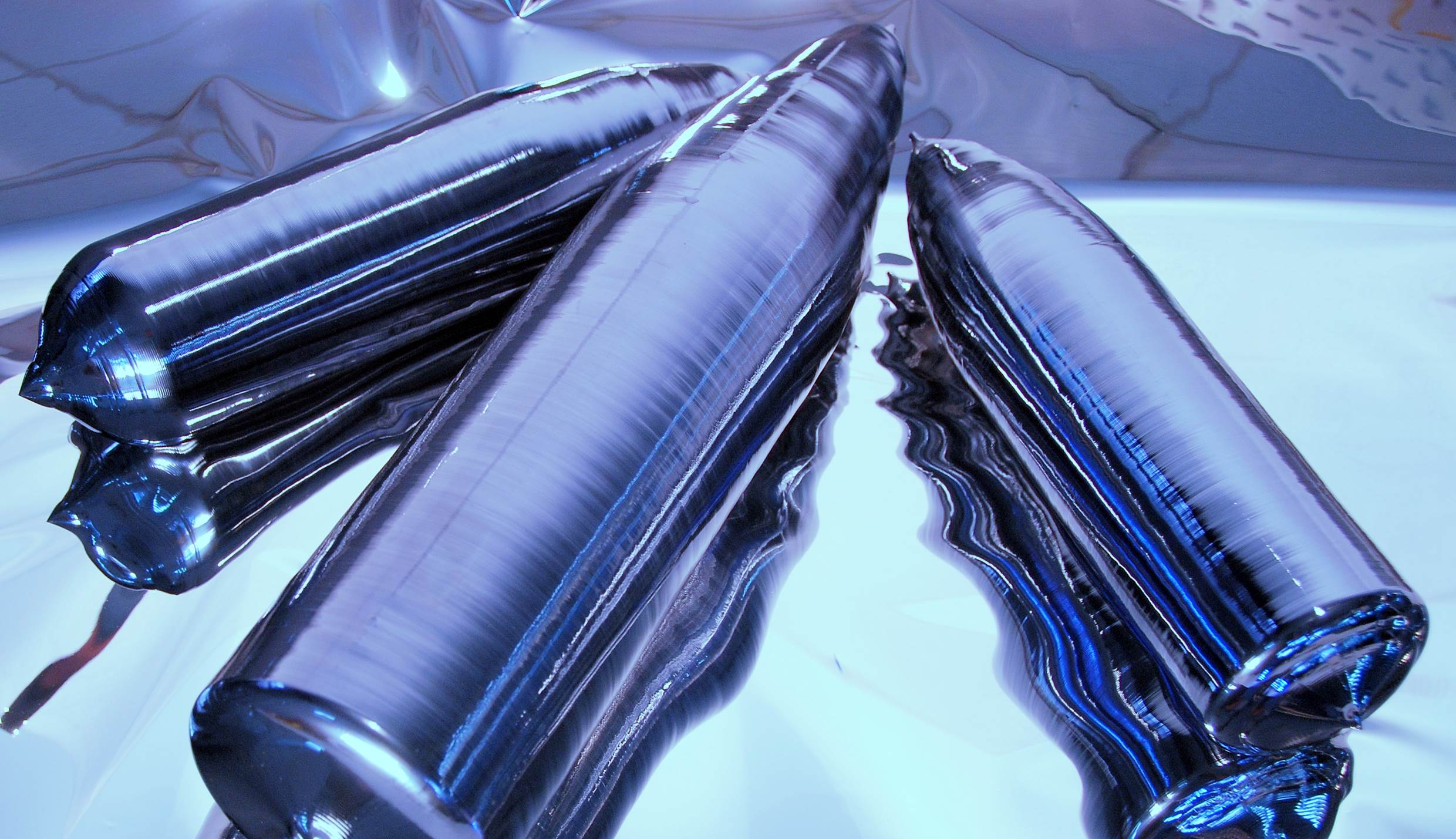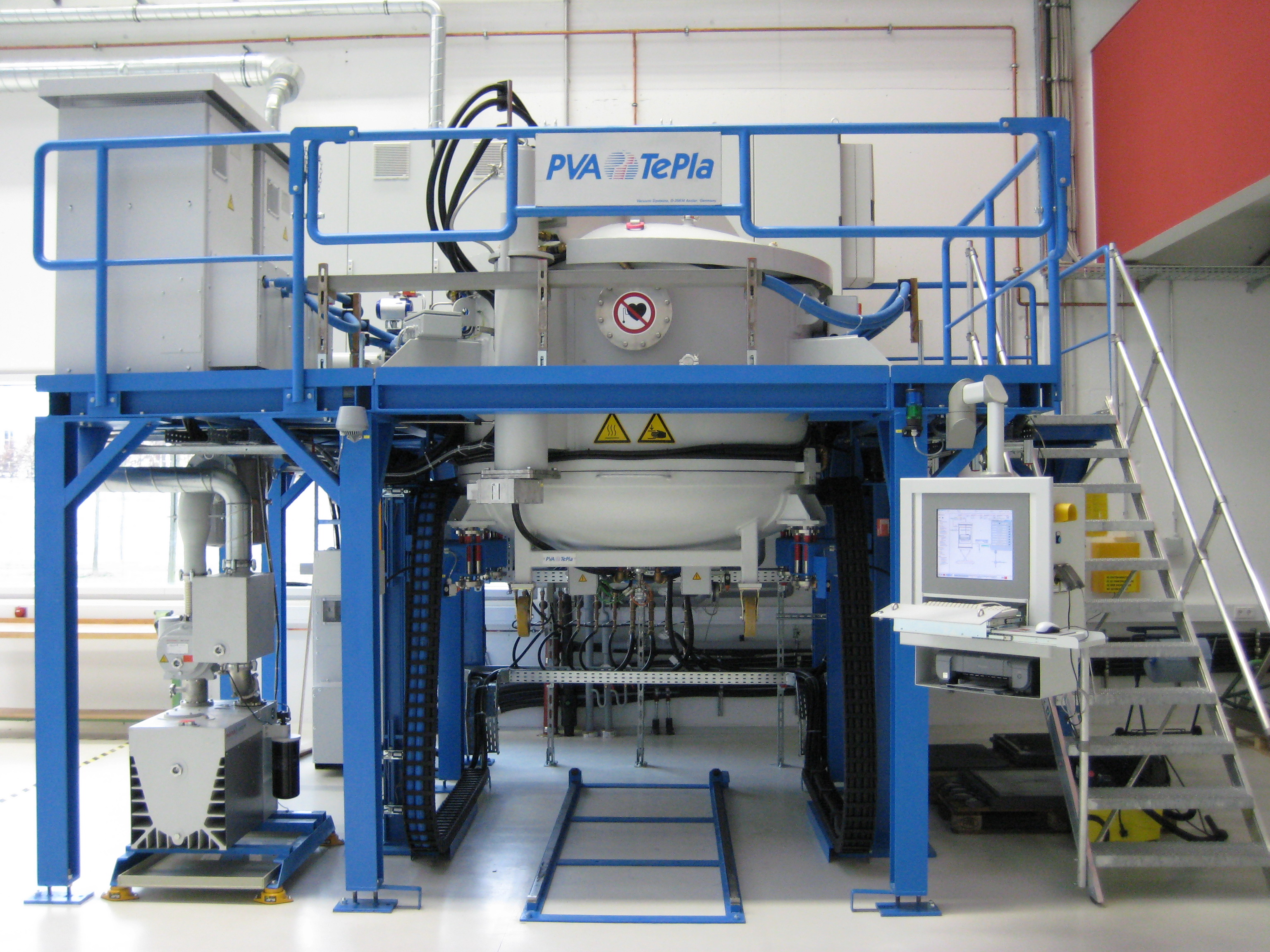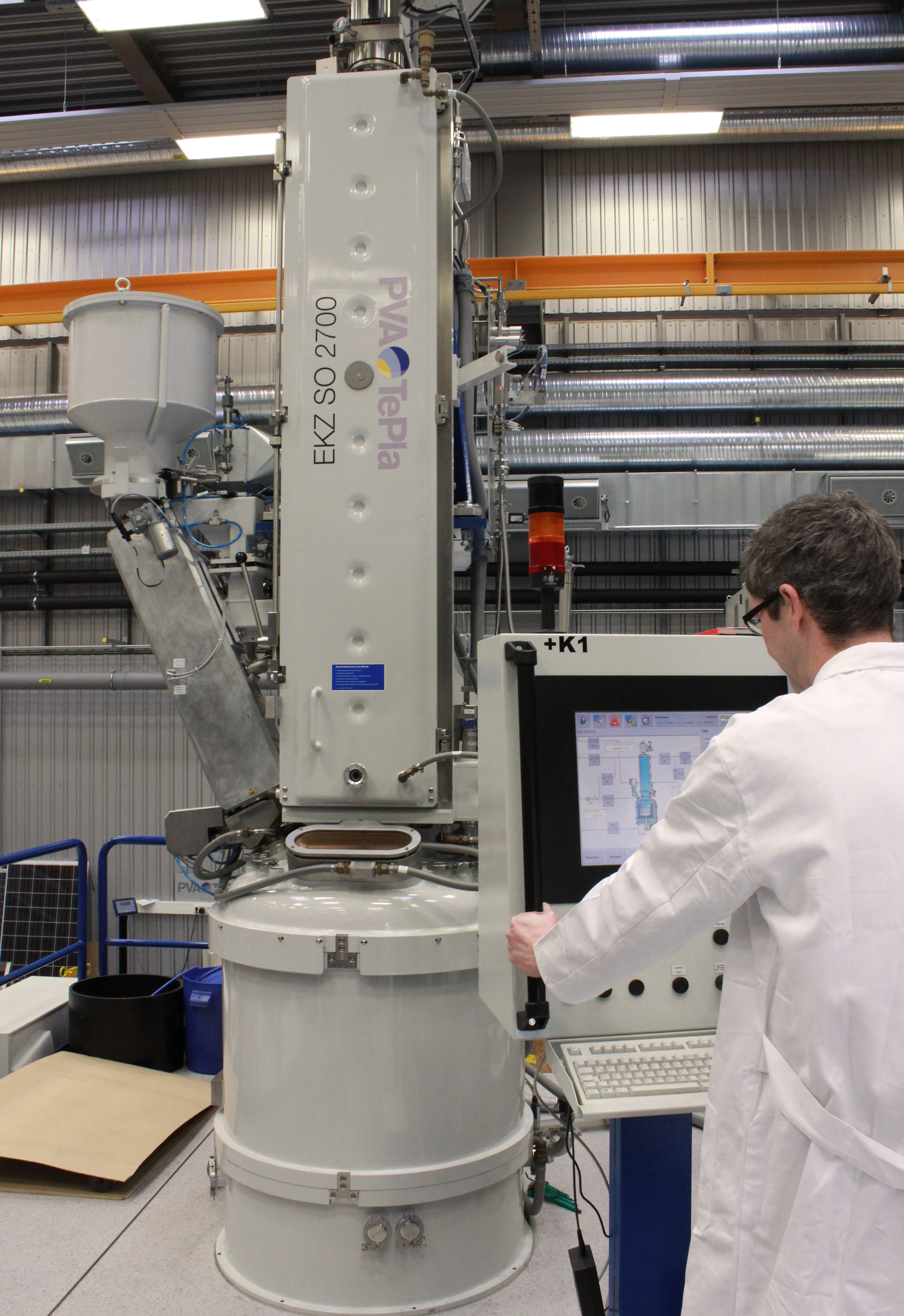The Fraunhofer CSP offers a platform for industrially relevant crystallizations with production-scale equipment sizes using crystallization technologies. Current focuses of our research activities include reducing process costs, optimizing crystal properties, and simplifying processes through enhanced automation.
Benefiting from the competencies of Fraunhofer CSP and its integration into the structure of the Fraunhofer Institute for Solar Energy Systems ISE, the entire spectrum of silicon technology is available following crystallization. This encompasses material characterization, crystal processing, wafer and cell manufacturing, cell certification, as well as module production and testing.
 Fraunhofer Center for Silicon Photovoltaics CSP
Fraunhofer Center for Silicon Photovoltaics CSP

